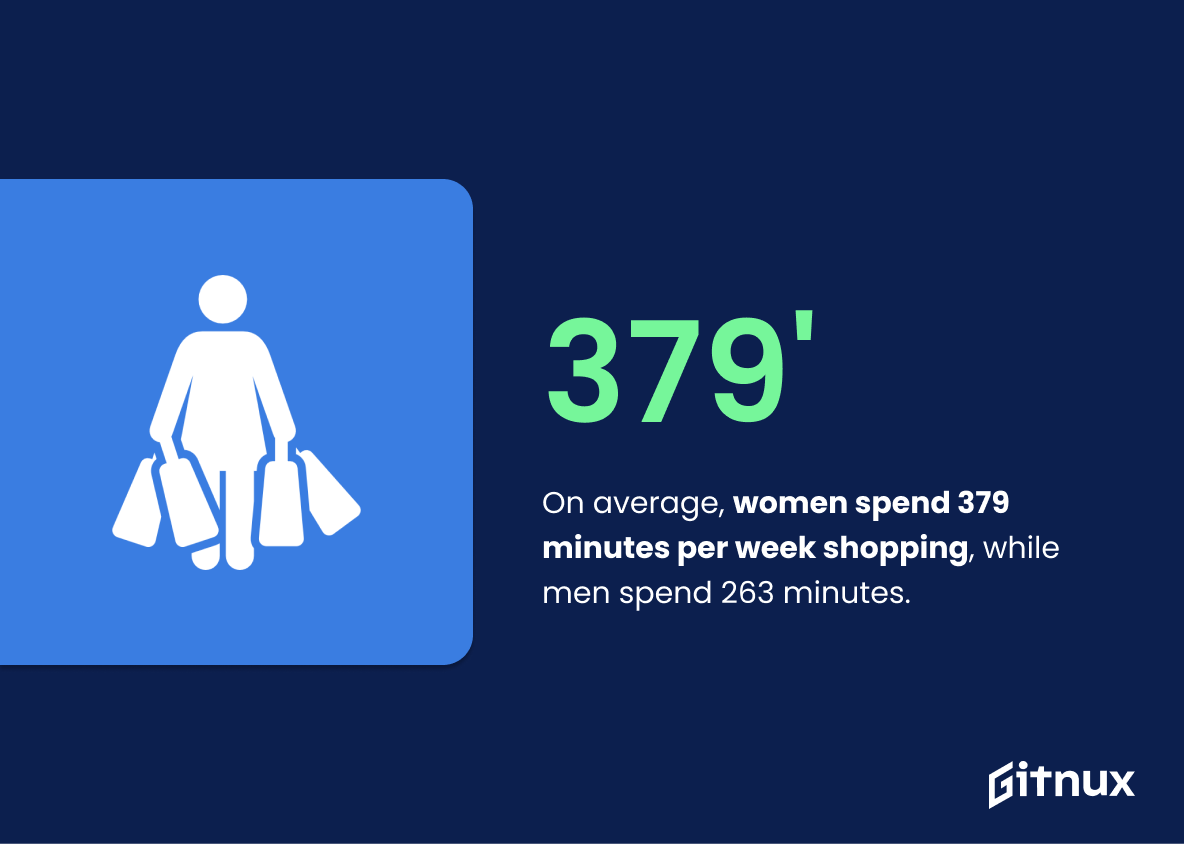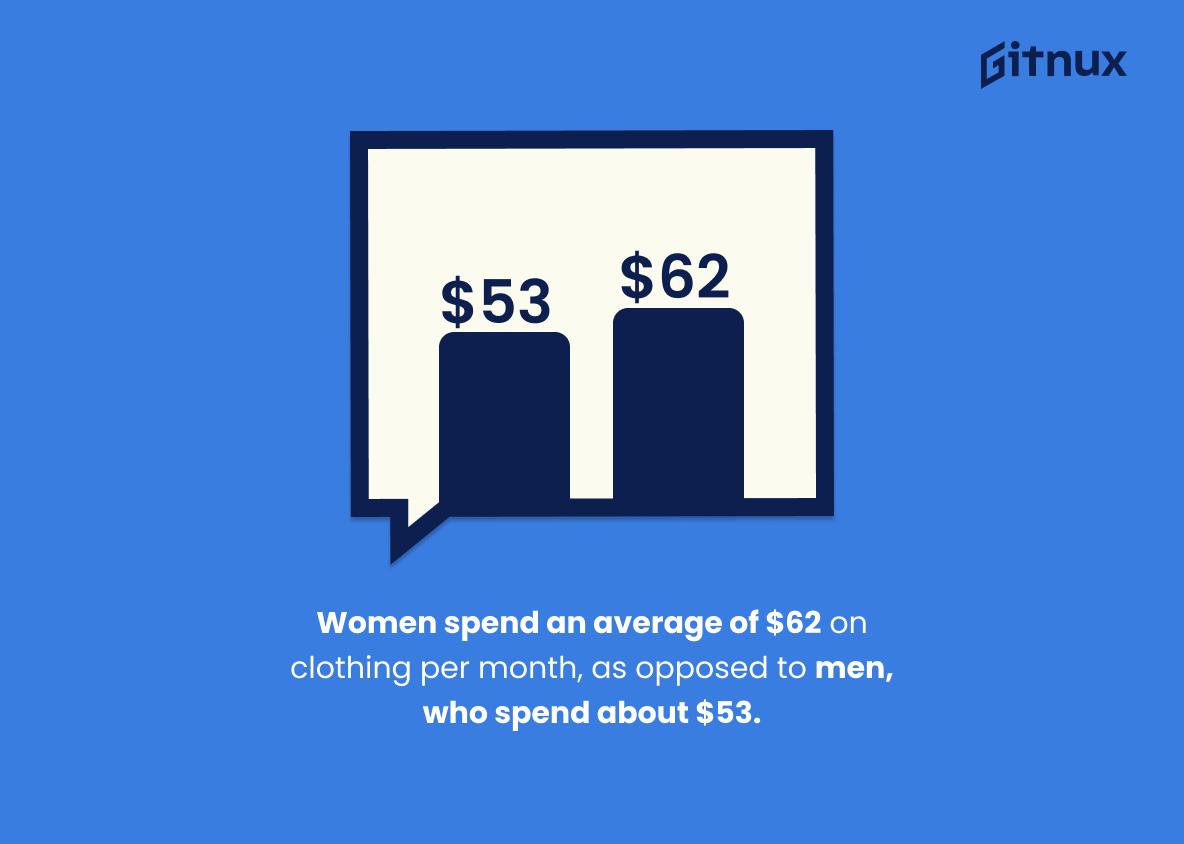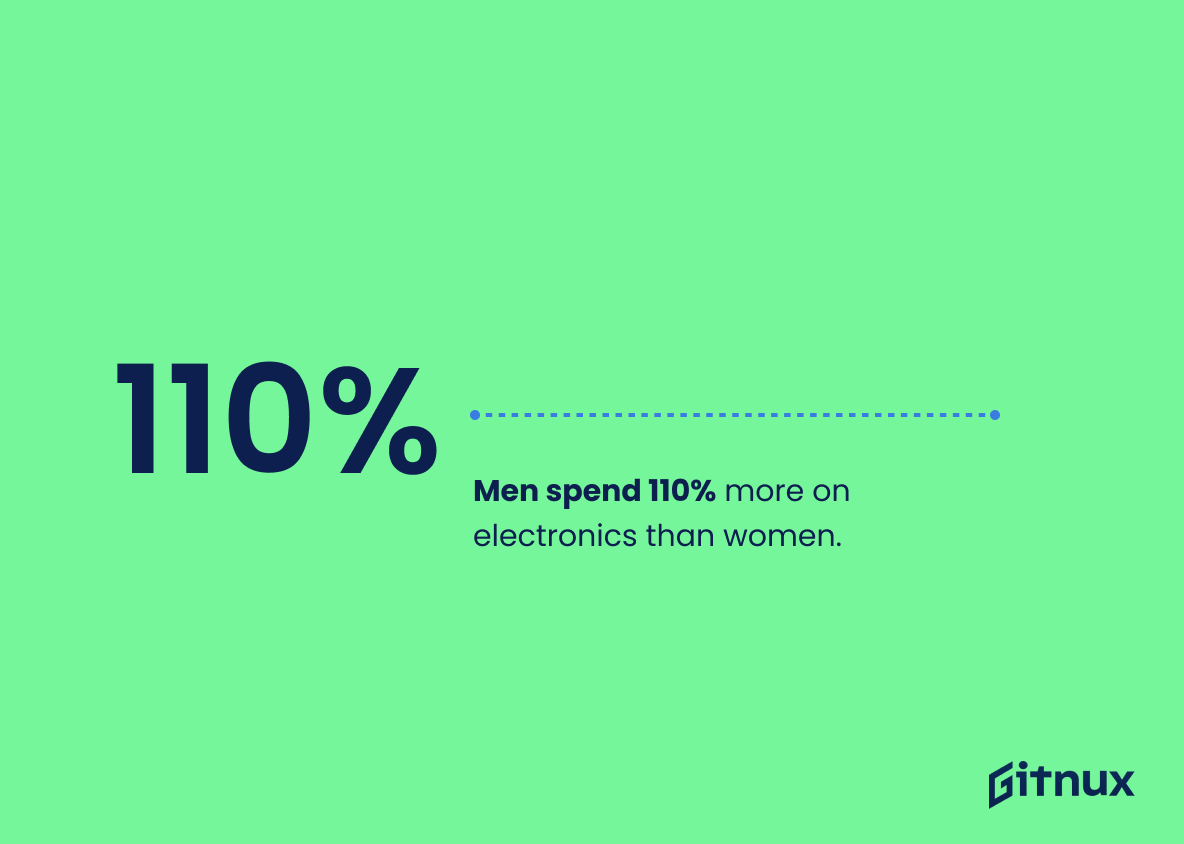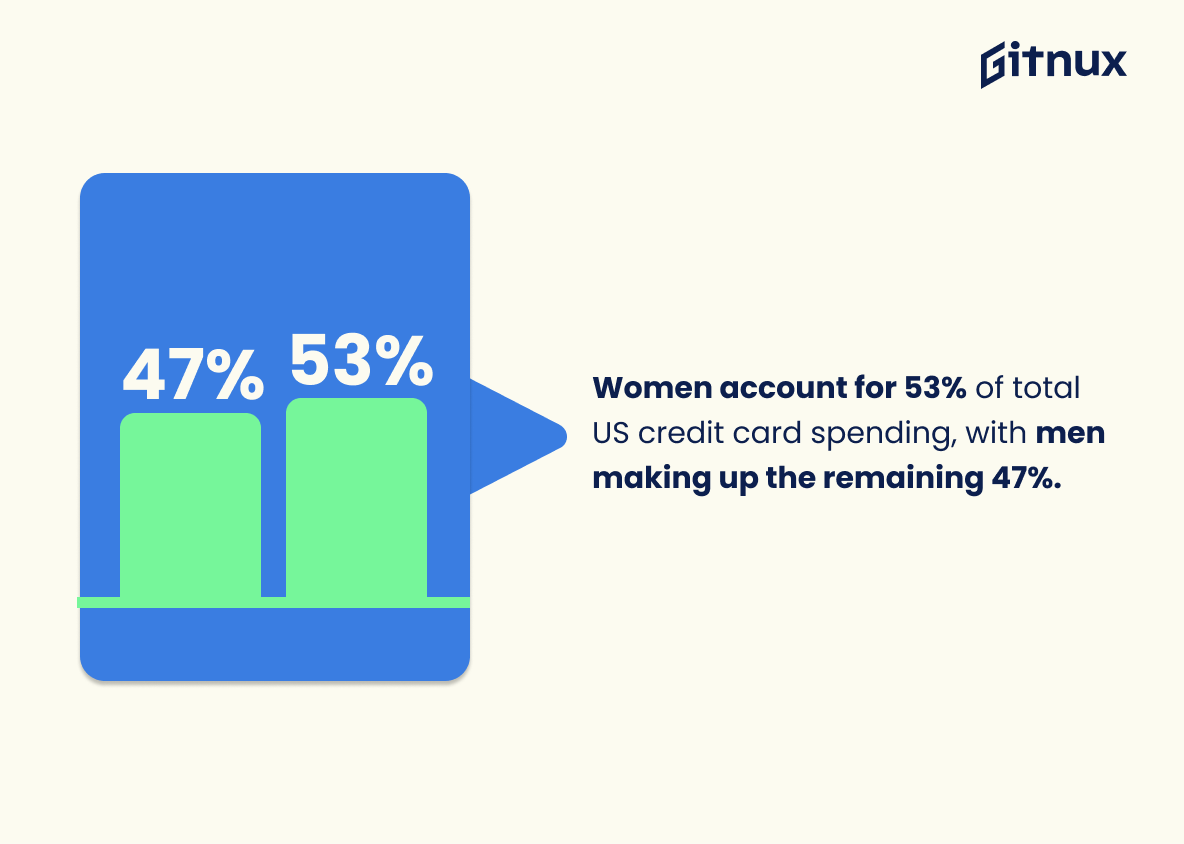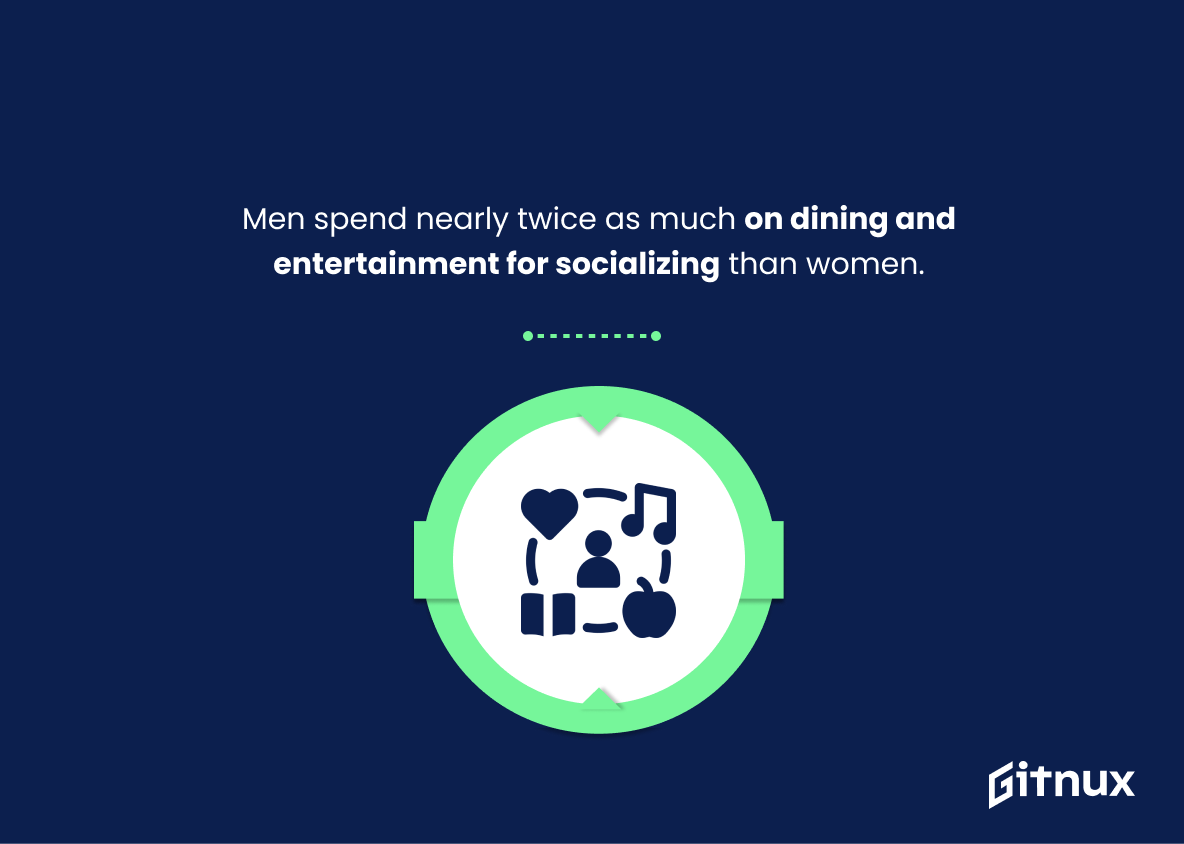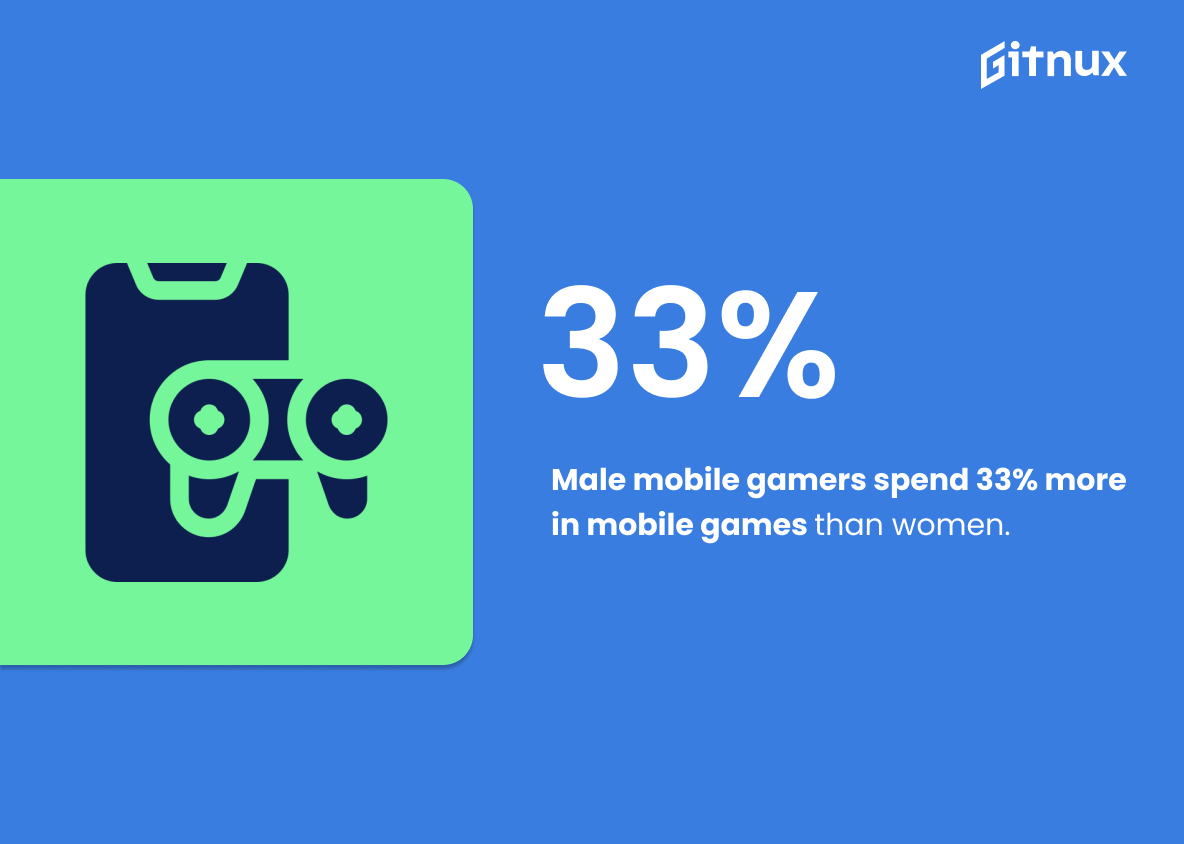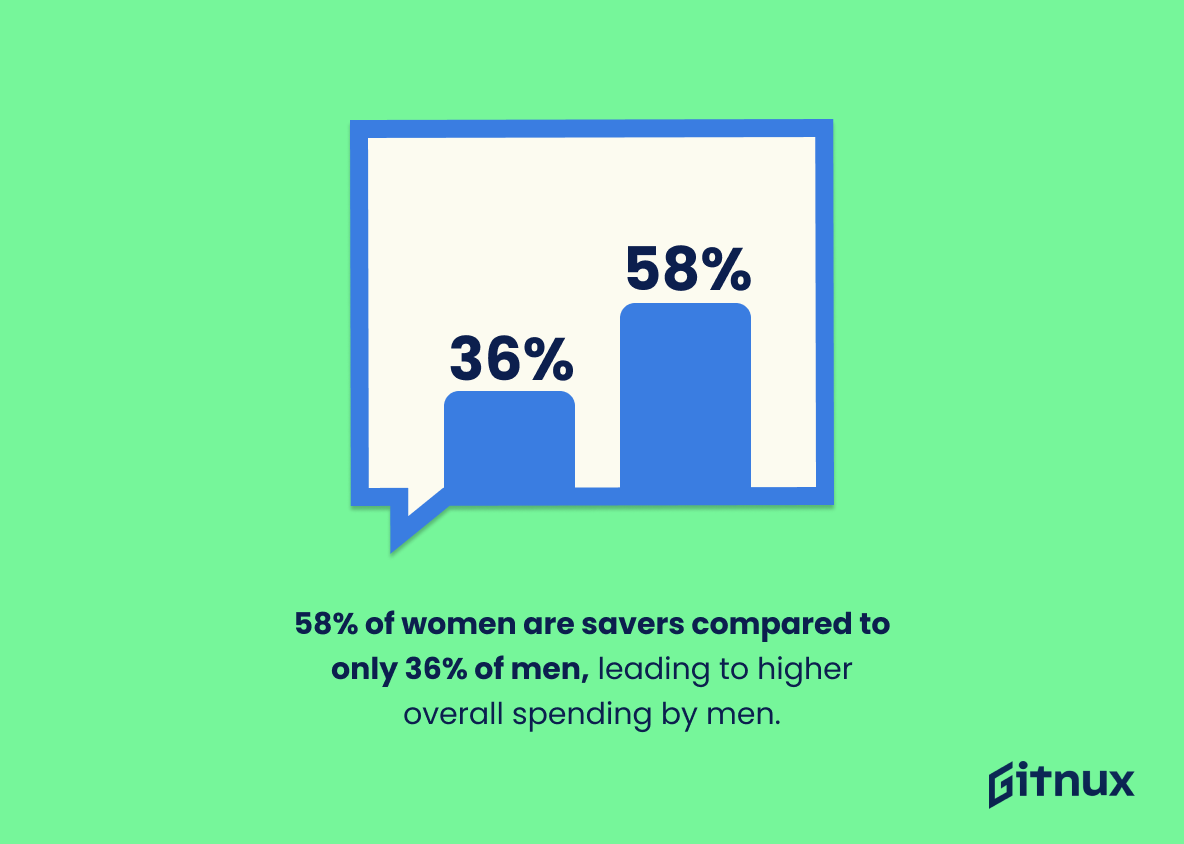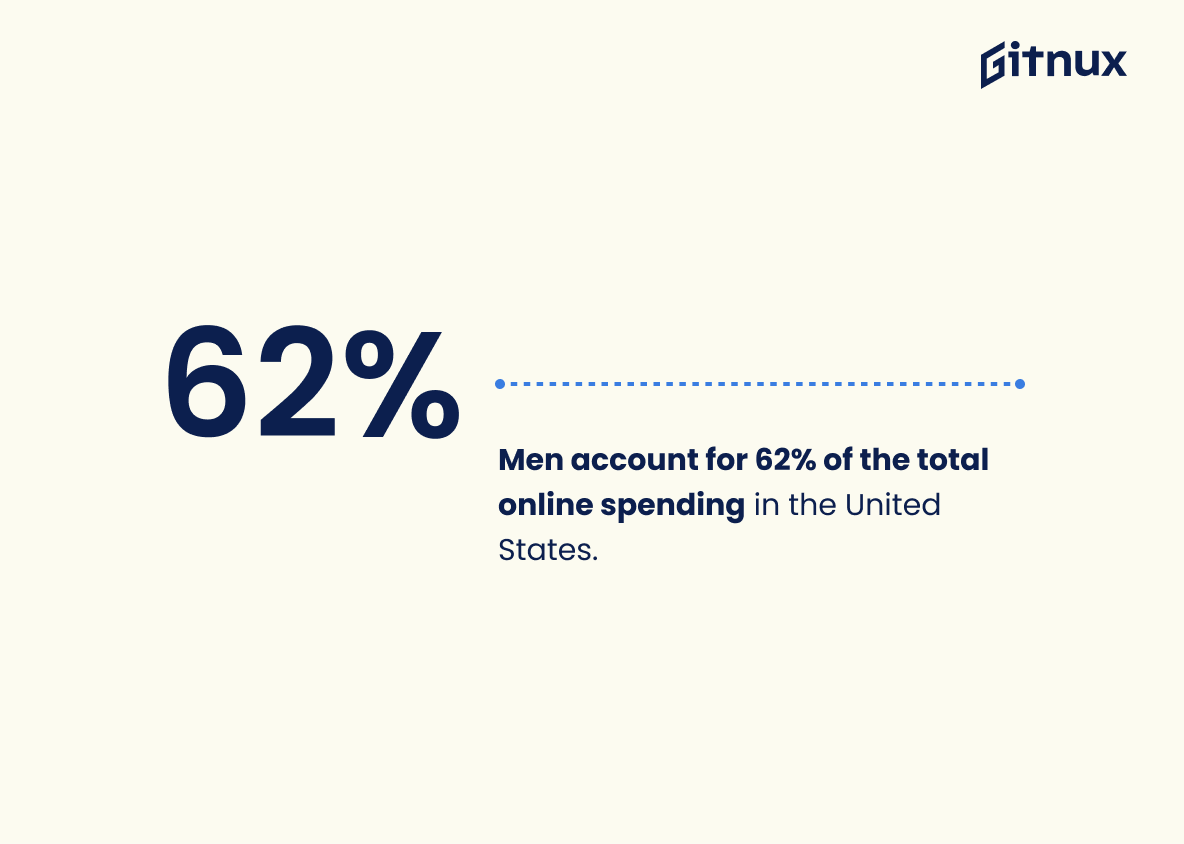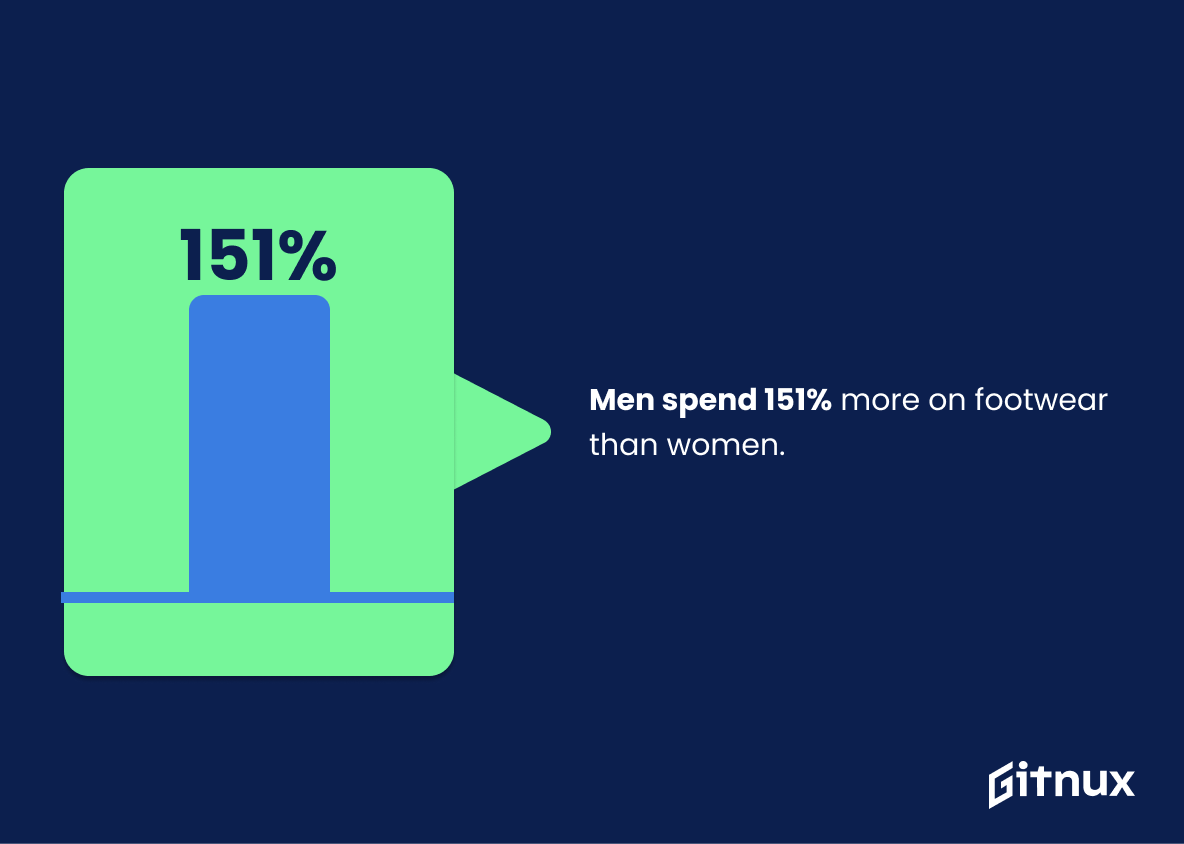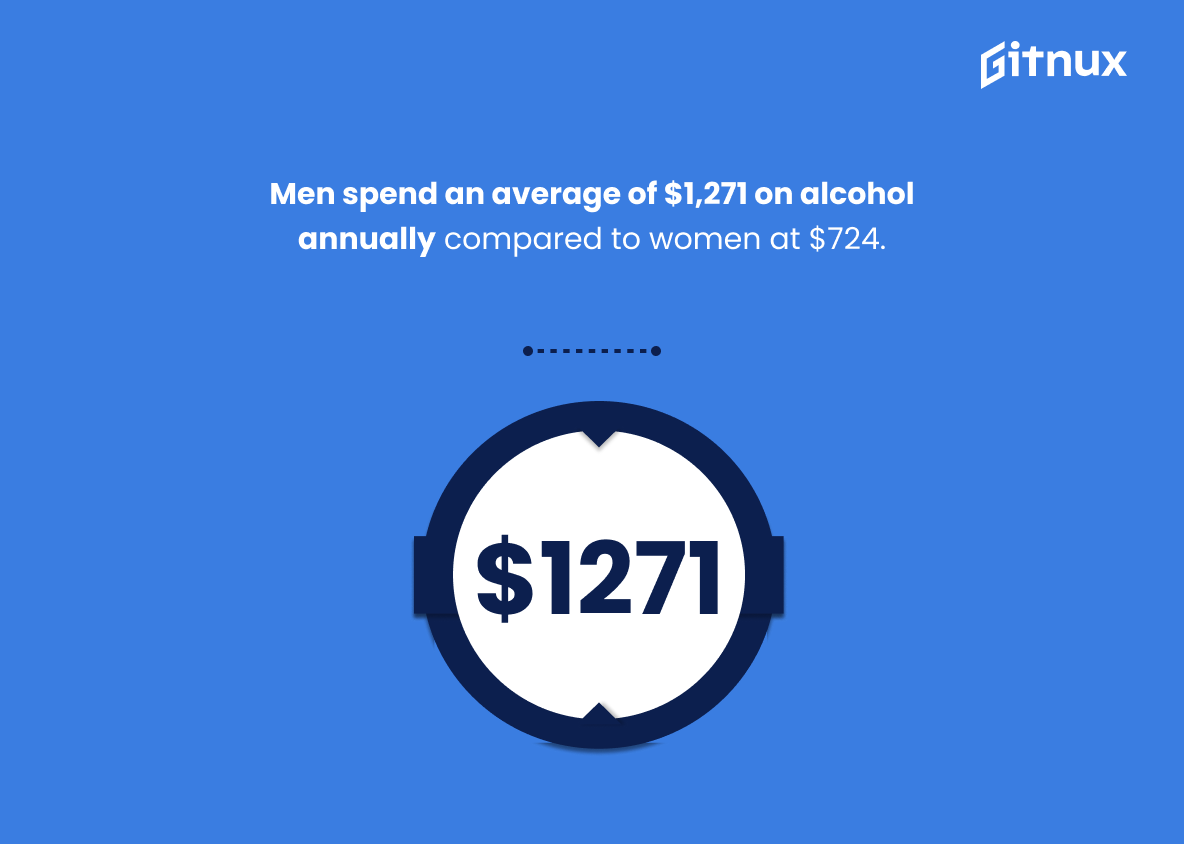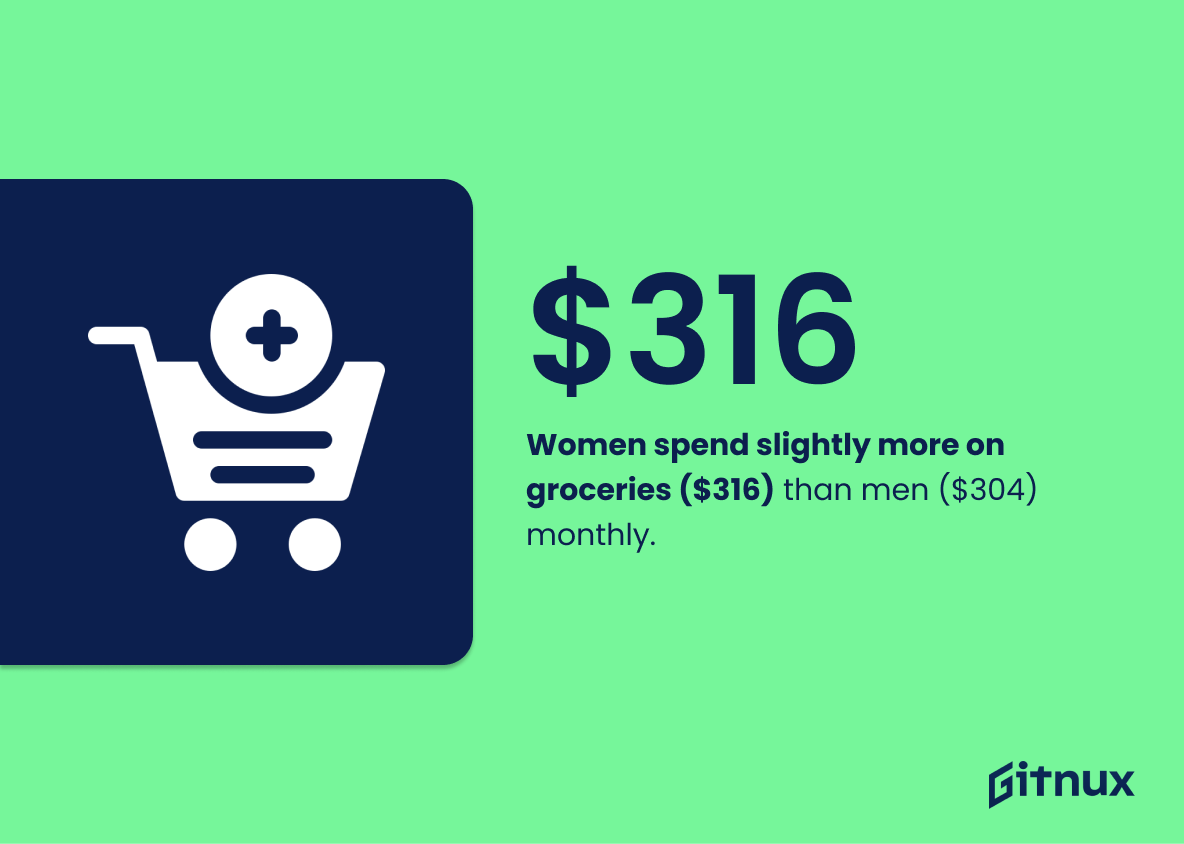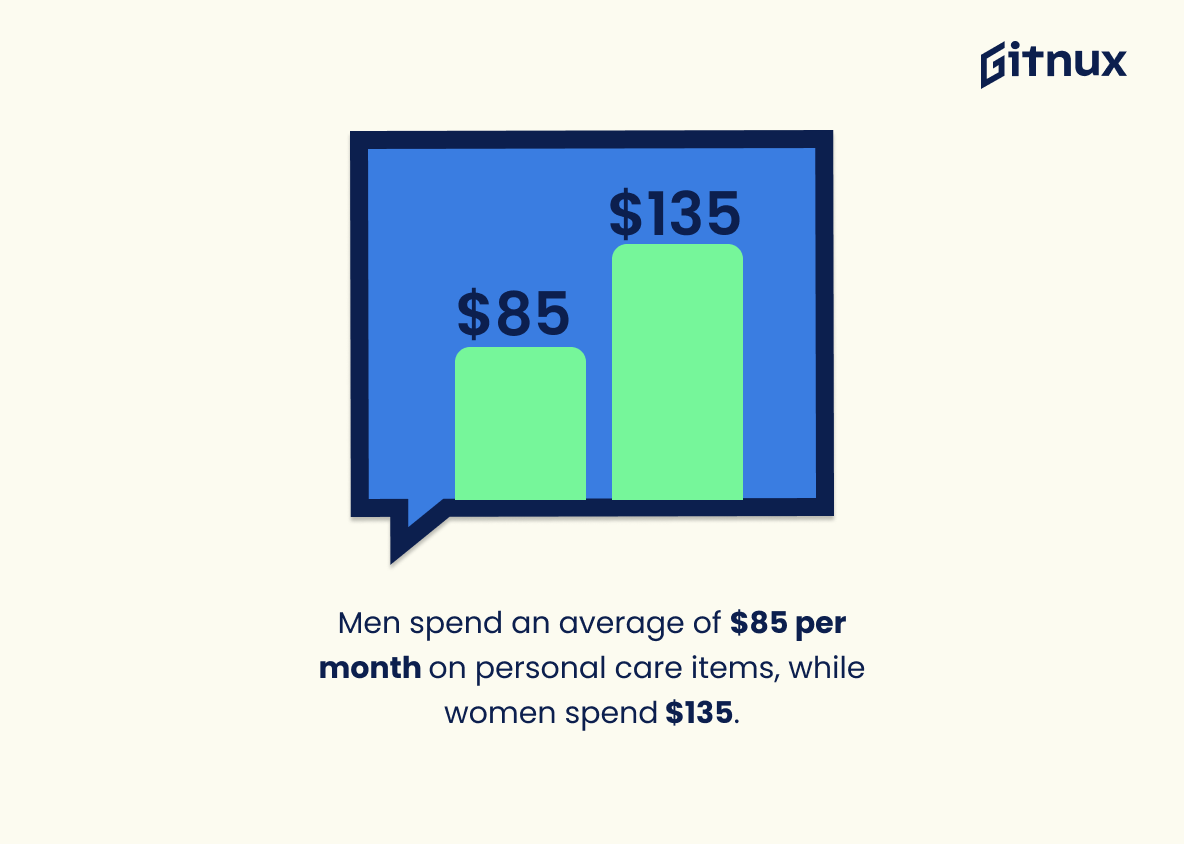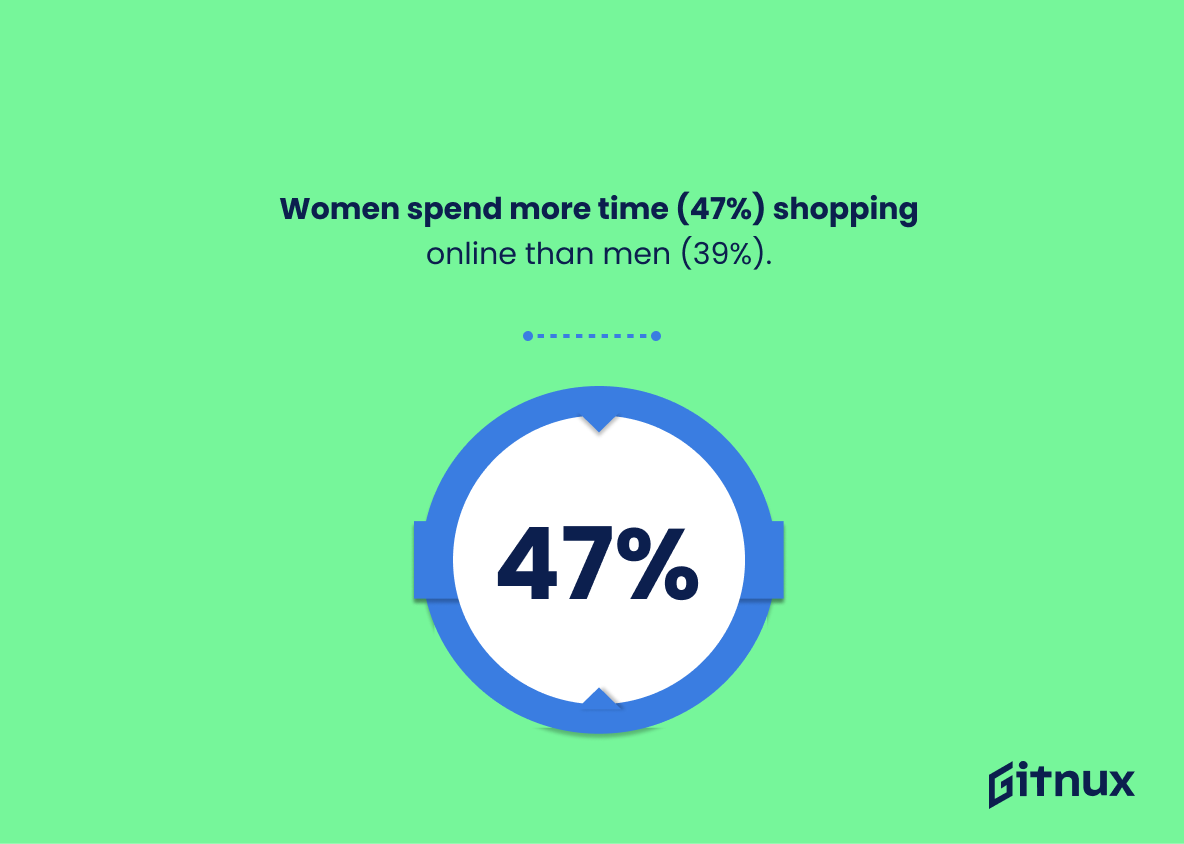When it comes to spending, men and women have different habits. Women drive 70-80% of consumer spending while men control the remaining 20-30%. Men are more likely to make impulse purchases (54%) than women (45%). On average, women spend 379 minutes per week shopping compared to 263 minutes for men. Women also tend to spend more on clothing ($62) and personal care items ($135), whereas men typically outspend them in electronics (110%), dining/entertainment for socializing (nearly twice as much), mobile gaming (33%), health insurance premiums (26%), footwear(151%) alcohol consumption($1,271 annually) and lottery tickets ($16.70 per week). Additionally, 53% of US credit card spending is done by women with 47% being attributed to male shoppers; however when it comes online shopping 50% of males make a purchase on a mobile device compared 45% females who do so – although they still take longer at 47%, versus 39%.
This statistic is a powerful reminder of the immense influence women have on the economy. It highlights the fact that women are the primary drivers of consumer spending, and that men are only responsible for a fraction of it. This is an important point to consider when discussing male vs female spending statistics, as it provides a valuable insight into the spending habits of both genders.
Men are more likely to make impulse purchases (54%) than women (45%).
This statistic is a telling indication of the differences in spending habits between men and women. It suggests that men are more likely to make purchases without considering the consequences, while women are more likely to think through their purchases before committing to them. This insight can be used to inform marketing strategies and help businesses better understand their target audiences.
Male vs Female Spending Statistics Overview
On average, women spend 379 minutes per week shopping, while men spend 263 minutes.
This statistic serves as a stark reminder of the gender gap in spending habits. It highlights the fact that, on average, women are spending more time shopping than men, indicating that they are likely to be spending more money as well. This is an important point to consider when discussing male vs female spending statistics, as it provides insight into the different approaches to shopping between the two genders.
Women spend an average of $62 on clothing per month, as opposed to men, who spend about $53.
This statistic serves as a stark reminder of the gender gap in spending habits. It highlights the fact that women are spending more than men on clothing, which could be indicative of a larger trend in gender-based spending. This could be a sign of the gender pay gap, or of the fact that women are more likely to invest in their appearance than men. It is an important statistic to consider when discussing male and female spending habits.
Men spend 110% more on electronics than women.
This statistic is a telling indication of the gender gap in spending habits, highlighting the fact that men are more likely to invest in electronics than women. It is an important piece of information to consider when discussing male vs female spending statistics, as it provides insight into the differences in spending habits between the two genders.
Women account for 53% of total US credit card spending, with men making up the remaining 47%.
This statistic is a telling indication of the spending habits of men and women in the US. It highlights the fact that women are more likely to use credit cards for their purchases, while men are more likely to use other forms of payment. This information can be used to inform marketing strategies and help businesses better understand their target audiences.
Men spend nearly twice as much on dining and entertainment for socializing than women.
This statistic is a telling indication of the differences in spending habits between men and women. It highlights the fact that men are more likely to invest in socializing activities, such as dining and entertainment, than women. This can be used to draw conclusions about the different priorities and values that men and women place on socializing and leisure activities. It can also be used to inform decisions about marketing and advertising strategies, as well as to inform budgeting decisions.
Male mobile gamers spend 33% more in mobile games than women.
This statistic is a telling indication of the disparity between male and female spending in mobile games. It highlights the fact that men are more likely to invest more money in mobile gaming than women, which could be indicative of a larger trend in the gaming industry. This statistic is important to consider when discussing male vs female spending statistics, as it provides insight into the differences in spending habits between the two genders.
58% of women are savers compared to only 36% of men, leading to higher overall spending by men.
This statistic is indicative of a larger trend in male and female spending habits, with women being more likely to save their money and men more likely to spend it. This difference in spending habits can have a significant impact on the overall financial health of both genders, with men potentially spending more than they can afford and women having more money saved for the future. This statistic is an important reminder that men and women have different spending habits and that it is important to be aware of these differences when budgeting and planning for the future.
Men account for 62% of the total online spending in the United States.
This statistic is a telling indication of the spending power of men in the United States. It highlights the fact that men are more likely to make online purchases than women, and that they are more likely to spend more money when they do. This is an important point to consider when discussing male vs female spending statistics, as it provides insight into the differences in spending habits between the two genders.
Men spend 151% more on footwear than women.
This statistic is a telling indication of the gender gap in spending habits. It highlights the fact that men are more likely to invest in footwear than women, which could be due to a variety of factors such as societal expectations or personal preferences. This statistic is an important piece of the puzzle when it comes to understanding the differences in spending habits between men and women.
Men spend an average of $1,271 on alcohol annually compared to women at $724.
This statistic serves as a stark reminder of the gender gap in spending habits, with men spending almost twice as much on alcohol annually compared to women. It highlights the need for greater awareness of the financial disparities between genders and the importance of addressing them.
Women spend slightly more on groceries ($316) than men ($304) monthly.
This statistic is a telling indication of the differences in spending habits between men and women. It highlights the fact that women are more likely to prioritize groceries over other items, suggesting that they are more likely to prioritize their health and nutrition. This statistic can be used to further explore the differences in spending habits between men and women, and how those differences can be used to inform marketing strategies and consumer behavior.
Men spend an average of $85 per month on personal care items, while women spend $135.
This statistic serves as a stark reminder of the gender gap in spending habits. It highlights the fact that women are spending significantly more than men on personal care items, which could be indicative of a larger trend of women having to spend more money on items related to their appearance. This could be due to societal pressures or other factors, and this statistic serves as a reminder of the need to address this issue.
Men are twice as likely as women to spend $2,000 or more on gadgets.
This statistic is a telling indication of the differences in spending habits between men and women. It highlights the fact that men are more likely to invest in gadgets, which could be indicative of a larger trend in the way men and women allocate their resources. This could be an interesting point to explore further in the blog post, as it could provide insight into the different spending habits of men and women.
50% of men make a purchase on a mobile device compared to 45% of women.
This statistic is significant in the context of Male Vs Female Spending Statistics, as it highlights the disparity between the two genders when it comes to making purchases on mobile devices. It suggests that men are more likely to make purchases on their phones than women, which could be indicative of a larger trend in the way men and women shop. This could be useful information for marketers looking to target their campaigns to the right audience.
Women spend more time (47%) shopping online than men (39%).
This statistic is a telling indication of the differences in shopping habits between men and women. It suggests that women are more likely to take the time to browse and compare online, while men may be more likely to make quick decisions and move on. This could be an interesting point to explore in a blog post about male vs female spending statistics, as it could provide insight into the different approaches to shopping between the two genders.
Conclusion
In conclusion, it is clear that there are significant differences in the spending habits of men and women. Women drive 70-80% of consumer spending, while men control the remaining 20-30%. Men are more likely to make impulse purchases than women and spend significantly more on electronics, dining out for socializing purposes, health insurance premiums and lottery tickets. On average they also spend more time shopping online than women do. Conversely, when it comes to clothing expenses per month as well as car maintenance costs – both areas where money can be saved -women tend to come out ahead.
References
0. – https://www.warc.com
1. – https://www.nber.org
2. – https://www.usatoday.com
3. – https://www.creditdonkey.com
4. – https://www.levi.com
5. – https://www.forbes.com
6. – https://www.prweb.com
7. – https://www.fool.com
8. – https://www.gamasutra.com
9. – https://www.finder.com
10. – https://www.valuepenguin.com
11. – https://www.prnewswire.com
12. – https://www.powerretail.com.au
13. – https://www.chase.com
14. – https://www.creditcards.com
15. – https://www.hbr.org
16. – https://www.marketwatch.com
